Less frequently seen today, the 25 ACP is still used in concealable pistols, like the LWS Seecamp. The question is: is the 25 ACP a viable self-defense round, or has it been overshadowed by the .380?
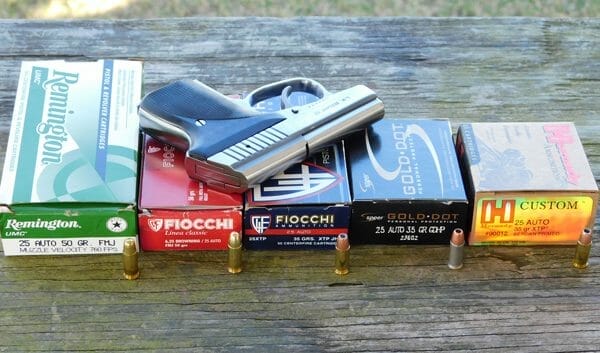
U.S.A. -(Ammoland.com)- Pocket 380 pistols are today’s thing, as much as pocket 25 ACP handguns were yesteryear’s mainstay of many a self-defense regimen. Today we associate the “quarter bore” with cheap, throwaway pistols and a complete lack of power to do anything. For a long time, I have wanted to see tangible evidence for that reputation. What I received were hand-me-down stories and cliched one-liners.
Why should I care about the performance of a round few people use anymore? Well, the 25 is still more common than you might think. Millions of pistols come chambered for the puny round. Collecting vintage 25s and treating the gamut of pistols still in circulation as range jokers is fine, but there are a few legitimate reasons to know how the 25 would stack up if you had to use it.
Like myself, you might think the 25 to be a legitimate deep cover pistol. For others, the reasons are less about interest and more about circumstances that chose the 25 for you.
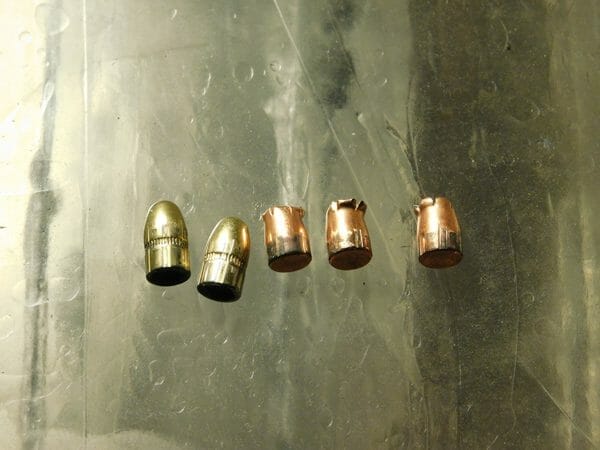
A Bit on the Cartridge
Concealed carry handguns are a fad that never fades. In the late 1890s, tiny 22 and 32 caliber revolvers were popular items for personal defense. By the early 1900s, semi-automatic pistols became more available and people soon wanted a pocket version to carry.
Fast firing, fast loading, you get the picture. But pocket pistols were a long way off from today’s popularity. In the heyday of firearms, the preference was to match a tiny cartridge to an oversized pistol.
John Browning broke this cycle when he developed his slide operated pistols and was quick to adopt a pocket version for his new tailor-made cartridge, the 25 ACP for the Browning M1905 pistol. The cartridge was reliable with its semi-rimmed case for sure extraction and a centerfire case to up it over the rimfire 22s that were so popular.
By today’s standards, a fifty-grain bullet traveling at only 750 feet per second isn’t much, but it was more substantial than many of Browning’s pocket pistol competitors at the time. Browning spawned many imitators and the round was a big hit with the civilian market. 25s were even issued to various militaries in minor capacities.
A good 25 ACP pistol was easy to hide, easy to fire, and very affordable, which eventually made the type targeted by the 1968 Gun Control Act. This banned the import of many pistols and started the 25s decline in popularity.
The increased reliability of 22 LR ammunition did the quarter-bore no favors. Today only a few companies make 25 ACP handguns, but there is still quite a variety of ammunition available. With a good sampling of ammunition, I packed up my LWS Seecamp, a 10% calibrated ballistic block from Clear Ballistics and went to the range.
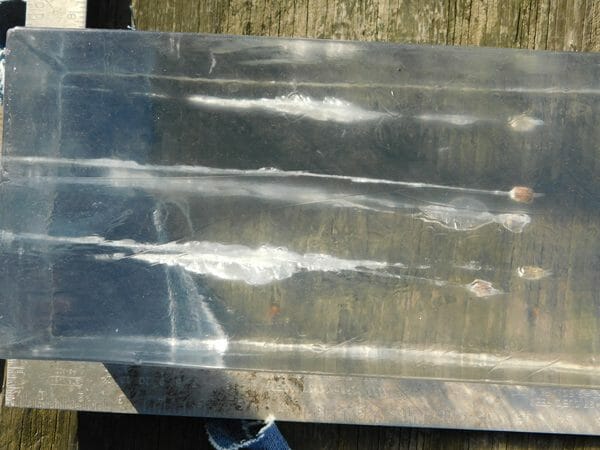
On The Range
To know the round’s true potential in any repeatable, legally testable way, it boils down FBI protocol. That protocol is between 12-18 inches of penetration of a 10 percent ordinance block and four layers of denim.
Finding full metal jacket 25 ACP is easy enough at your local outdoor store, but finding good hollow points is a challenge. I ultimately ended up with Remington UMC and Fiocchi’s 50 grain FMJ loading and the 35 grain XTP hollow-point offerings from Hornady and Fiocchi. Speer Gold Dot 35 grain hollow-points round out the test.
1st was the 50-grain, shooting all the ammunition through my Caldwell Chronograph to find out how much velocity each load was imparting. More velocity—or bullet speed—should, in theory, lead to more impact on a target.
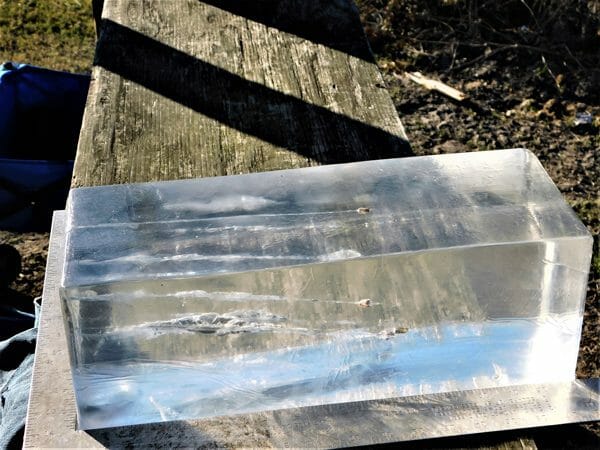
25 ACP Velocities
| Load | Velocity (Avg of three shots) |
|---|---|
| Remington 50 grain FMJ | 856 fps |
| Fiocchi 50 grain FMJ | 718 fps |
| Fiocchi 35 grain XTP | 1029 fps |
| Hornady Custom 35 grain XTP | 911 fps |
| Speer Gold Dot 35 grain HP | 947 fps |
European made ammunition is loaded hot. This is true comparing Hornady’s offering with Fiocchi, but the same firm’s ball ammunition is significantly behind plain store-bought Remington 50 grainers, my favorite load.
With some data, I was expecting the full metal jacket rounds to do well, perhaps even the Fiocchi 35s with speed that I couldn’t believe out of a two-inch barreled Seecamp pistol. I set up my gel block and stuffed one end with four layers of denim—I wasn’t much into blue jeans anyway. I fired a total of six rounds into the block from two feet away to avoid a less-than-ideal hit.
Not close enough, I can tell you. The Remington round, though it landed squarely jettisoned from the block at the seven-inch mark did very little damage upon exiting the block. Speer’s bullet tumbled end over end toward the end of its travel, stretching the cavity as it came to rest 10 3/8 inches in the block.
Surprisingly, the hot Fiocchi XTP performed the least climactically with a relatively narrow path to its short 9 ½ inch stop. It, along with the Hornady round tumbled and landed base first, but the Hornady managed ten inches.
There was no expansion on any of the hollow-points.
With the Remington round lost, I fired two Fiocchi FMJ rounds into the block. I expected a little more than eleven inches of penetration. What amazed me was the stretch cavities the FMJ bullets gave. The stretch cavities for both rounds were a solid inch in diameter and extending three inches in the block, a few inches upon entry.

Still A Place for the 25 ACP?
Twelve inches of penetration is what I needed, minimally, for the cartridge to be acceptable for self-defense. Where does this number come from when many of us are not twelve inches thick from chest to back? This takes into account side shots, the presence of bone, and other stoppages that the bullet has to get through to reach vital organs. It is an approximation. An approximation the 25 ACP has—at this time—failed to meet.
Proper shot placement will make up for relatively poor ballistics. It is worth noting some of the downsides of the 25 ACP. A similar test using common brand 22 LR ammunition in the same sized handgun gave me similar results, with more than a few brands including CCI Stingers, exceeding the requirement. The 22 LR, both in ammunition and firearms, is far more available now. It also appears to have an edge in power too.
I would be confident that the Remington 50 grain load would achieve the requirement. But when you are relying on one of several loads to get performance, you really are in a bad way. This ammunition’s lack of performance is the sacrifice for a tiny, low-recoiling pistol.
Ultimately, I left the range thinking the little 25 deserved better loadings. There are still some good reasons to choose a 25. The size of the pistol is one of them, being infinitely more packable than any small 380 we have today. Though 22 LR has come a long way, the 25 ACP is still packed into an equally small package and remains more reliable thanks to its centerfire construction. The 25 ACP is made for tiny pistols. The 22 LR isn’t.
As we leave it, the 25 ACP is still an inch short of meeting the FBI’s minimum requirement of 12 inches of penetration. Speer Gold Dots and FTXs are great, but they are simply not appropriate in the small-caliber rounds. However, these rounds are loaded warmly. One has to wonder what a full metal jacket loading at those speeds could really do. Until that magic loading comes, this quarter-bore fan will be on standby.
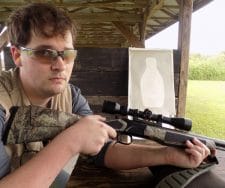
About Terril Hebert:
Terril Hebert is a firearm writer native to south Louisiana. Under his motto—Guns, Never Politics—he tackles firearm and reloading topics both in print and on his Mark3smle YouTube channel, where he got his start. He has a soft spot for ballistics testing, pocket pistols, and French rifles. When he is not burning ammo, he is indulging his unhealthy wildlife photography obsession or working on his latest novel. Scourge of God, published in 2017.
